Global Journal of Obesity, Diabetes and Metabolic Syndrome
The period of manifestation of type 1 diabetes mellitus in children and adolescents living on the territory of ZATO (Closed administrative-territorial entity)
Мargarita V Proskurina1, Tatiana E Taranushenko2* and Natalia G Kiseleva3
2MD, DSc, Professor, Department of Pediatrics of Institute of Postgraduate Education, Krasnoyarsk State Medical University Named After Professor Voino-Yasenetsky, Institute of Postgraduate Education for Pediatricians and Neonatologists, 1, Partizan Zheleznyak Str., Krasnoyarsk, 660022, Russian Federation
3Candidate of Medial Science, Assistant Professor, Department of Pediatrics of Institute of Postgraduate Education, Krasnoyarsk State Medical University Named After Prof. Voino-Yasenetsky, Institute of Postgraduate Education for Pediatricians and Neonatologists, Address: 1, Partizan Zheleznyak Str., Krasnoyarsk, 660022, Russian Federation
Cite this as
Proskurina МV, Taranushenko TE, Kiseleva NG (2022) The period of manifestation of type 1 diabetes mellitus in children and adolescents living on the territory of ZATO (Closed administrative-territorial entity). Glob J Obes Diabetes Metab Syndr 9(3): 035-039. DOI: 10.17352/2455-8583.000060Copyright License
© 2022 Proskurina МV, et al. This is an open-access article distributed under the terms of the Creative Commons Attribution License, which permits unrestricted use, distribution, and reproduction in any medium, provided the original author and source are credited.Type 1 diabetes mellitus (T1DM) in children and adolescents remains one of the urgent problems of pediatric endocrinology. There is a constant increase in disease rates, both worldwide and Russia. The occurrence of pathology in childhood leads to a decrease in the quality of life of patients and their parents, the early development of chronic complications and disability, which makes type 1 diabetes a social problem in society. Despite numerous scientific works devoted to the study of the factors of manifestation of the disease, the causes of the occurrence are still unclear and ambiguous.
The purpose of the study: is to identify and study possible clinical and laboratory features of the onset of type 1 diabetes in children and adolescents permanently residing in the territory of closed administrative-territorial entities (ZATO).
Materials and methods: a continuous cohort retrospective study of children with type 1 DM was conducted for the period from 2009-2019, permanently residing in the ZATO territory to obtain data related to the period of manifestation of the disease. The study group included 55 children from 0 - 18 years of age suffering from type 1 diabetes.
Results: Data on the anamnesis of life and disease, and indicators of clinical and laboratory studies (fasting glycemia, postprandial glycemia, average daily glycemia, average amplitude of glycemia fluctuations and glycated hemoglobin) at the time of disease manifestation are presented. A comparative analysis was carried out with the indicators of the Krasnoyarsk Territory, Russia, the obtained features were described.
Introduction
The urgency of the problem of type 1 diabetes mellitus (DM1t) in children and adolescents is determined by several circumstances [1,2], among which the most important should be considered a progressive increase in the number of patients, as well as the threat of early disability and a decrease in life expectancy due to the development of severe vascular complications.
The study of the causes and features of diabetes mellitus is of great medical and social importance because understanding the processes of disease development, as well as the course and management is an important problem of pediatrics. And an integrated approach to assessing the risks of development and the peculiarities of the course will lead to the correct management tactics, and the development of management tools and delay the development of complications.
The work carried out to study the features [3] of the manifestation of type 1 diabetes among children and adolescents were carried out for the first time in a closed administrative-territorial entity (ZATO) on the territory of the Krasnoyarsk Territory.
Purpose of the study
To identify the features of the onset of type 1 diabetes among children and adolescents living on the territory of ZATO, having studied the following signs of manifestation: anamnesis features, gender composition and age of patients, the season of the first symptoms, as well as clinical manifestations and indicators of carbohydrate metabolism during the initial visit to the endocrinologist.
Materials and methods
This study was conducted based on the FSBI KB No. 51 of the FMBA of Russia, a branch of the FSBI FSNCC of the FMBA of Russia KB No. 42.
The paper presents solid data from a cohort retrospective study of children with type 1 diabetes diagnosed in the last ten years (the period from 2009 to 2019). The observation group consisted of 55 children aged 0 to 18 years suffering from DM1t and permanently residing on the territory ZATO. In conducting this study, the material was anamnesis data collected following the protocol of this study, information from the regional register of diabetes mellitus, analysis of medical histories (form No. 003/y) and outpatient records (form 025 /y-0) of children with newly diagnosed type 1 diabetes. The study was performed following a unified protocol [4,5] that includes the necessary information about each child (passport data, anamnesis of life and disease, complaints, results of clinical and laboratory studies (including fasting glycemia, postprandial glycemia, average daily glycemia, the average amplitude of glycemic fluctuations, glycated hemoglobin) at the initial visit to an endocrinologist. Fasting glucose was taken as a diagnostic criterion (over 6.7 mmol / l on an empty stomach, or more than 11.1 mmol / l during a standard glucose tolerance test or in the presence of classic clinical manifestations of diabetes) with confirmation of the diagnosis by the level of glycated hemoglobin (HbA1c) exceeding 6.5% [2,5]. The level of glycated hemoglobin (HbA1C) was studied by a standardized method with reference values accepted in the DCCT (Diabetes Control and Complications Trial). The analysis of all indicators was carried out both in the cohort as a whole and in age groups that are traditionally accepted for pediatric practice [6].
The study was approved by the Ethics Committee of the State Educational Institution of Higher Education of Krasnoyarsk State Medical University Named After Prof. Voino-Yasenetsky (extract from the minutes No. 7 of the meeting of the local ethics committee dated 06.06.2018).
Statistical processing of the results of the study was carried out using the IBMSPSSSTATISTICS application software package. 19. The results are presented in the form of M ± sigma, where M is the mean value, ∑ is the standard deviation and the medians are Me (25th; 75th percentile ). Statistical analysis methods were selected after determining the compliance of samples with the law of normal distribution, taking into account the Shapiro-Wilk test. Taking into account the deviations of the samples from the normal distribution, nonparametric criteria (hikvadrat, Mann-Whitney, or Wilcoxon criterion for dependent groups) were used in the comparative analysis. The differences were considered statistically significant at p < 0.05. The average values and the median of the obtained indicators are calculated.
Results of the study
The studied group of patients included children from 0 to 18 years old with the allocation of subgroups taking into account age and gender characteristics. The average age in the group at the time of the debut was 8.4 years, Me 9 years [97% CI 1.45-16].
It is known that genetic factors are involved in the development of diabetes mellitus, which is realized under the influence of various external influences. According to literature data, the hereditary risk of developing DM1t in children is 1.1% [7,8]. In the group under consideration, indications of a burdened family history of insulin-dependent diabetes mellitus were noted in 9.1% of children. In 90.9% of cases, the disease was considered a sporadic form. The data obtained coincide with all-Russian trends, as well as with previously obtained data for the Krasnoyarsk Territory, according to which only 13.1% of patients had relatives with DM1t [9] (Figure 1).
The question of the relationship between the age of parents and the probability of developing type 1 diabetes is discussed. According to the data of this study, the average age of mothers at the time of the birth of children was 28.7 years, Me - 28 years [97% CI 18 - 38], while the analysis of the age of mothers at the time of the birth of the child showed an inverse relationship with the age of the manifestation of the disease: the older the age of the mother at the time of the birth of the child, the earlier the age manifested diabetes in a child.
According to the results of our observation, in 18.1 % of cases, one of the parents of the sick person worked at a city-forming enterprise (more than 5 years before the birth of the child), which does not exclude the indirect impact of anthropogenic factors on the formation of pathology and is consistent with the literature data on the influence of external factors (infectious, physical and/or chemical effects) capable of triggering epigenetic and immune-mediated mechanisms, which initiate the development of insulitis with the subsequent death of beta-cells of the pancreas [10,11].
An assessment of the age aspects of the disease showed more frequent cases of newly diagnosed episodes in the age groups of 5 - 9 years and 10 - 14 years, which respectively amounted to 41.8 % and 34.5 % of the total number of patients. The results obtained are comparable with the data of the Russian Federation and individual regions of Russia (Tver Region, Krasnoyarsk Territory, etc.) [9,12-15]. The belonging of newly ill children to these age groups of children may be due to pre- and pubertal features of this period in the child’s life. It is known that at this age the adolescent’s body undergoes vegetative, endocrine and immune rearrangements, which increases the risk of psychosocial maladaptation and dysregulation disorders with the lability of homeostasis , the addition of functional disorders and, not infrequently, the formation of new pathological conditions [7,12,15] (Figures 2,3 ).
The assessment of the manifestation of diabetes in the considered age groups of children did not establish significant gender differences, i.e. in the pre-and puberty periods, the disease developed with approximately the same frequency in both boys and girls. The exception was a subgroup of children who became ill at an early age (0 - 4 years), where girls predominated and boys from 10 - 14 years old.
When clarifying the gender characteristics of diabetes in the remaining age subgroups, no significant differences were found between boys and girls (Figure 4).
Analysis of the features of the manifestation of DM1t taking into account the seasons of the year showed that the onset of the disease in most cases occurred in the spring and autumn periods of the year, respectively, 29,1 % and 34,5 % of all registered cases. The presented data do not fully coincide with the results of other researchers, but common to most publications is an indication of a lower detectability of DM cases in the summer [9]. According to the well-known literature data, the manifestation of diabetes is highly likely associated with seasonal peaks of acute respiratory infections in the cold season [9,11,12]. Many authors describe the involvement of viruses in the pathogenesis of DM1t (acute cytological effect of the pathogen on the beta cell or prolonged persistence of the virus, causing immuno-mediated pathological processes with an outcome in a decrease in insulin production) [11].
Assessment of causal factors possibly provoking the manifestation of DM1t based on an analysis that was conducted at the Endocrinological Research Center of the Russian Academy of Medical Sciences in 1999 and showed that 58.7% of children had a viral infection 6 months - 10 months before the onset of diabetes, 5.6% had stress as the most likely provoking factor and 22.6% of those who were ill had a cause remained unspecified. In our study, among the factors that preceded the disease for several months, acute respiratory viral infections were registered in 18.1% of cases, and significant stressful situations were noted in 10.9% of cases. The manifestation of type 1 diabetes against the background of infectious pathology (UTI, paraproctitis, etc.) was established in 10.9% of children [5].
To date, the trigger factors in the realization of diabetes remain obscure and unexplained. It is known that anthropometric indicators are an integral indicator of a child’s somatic well-being [16]. We evaluated the physical development of children and adolescents at the time of diabetes onset. Hypothetically, it can be assumed that insulin deficiency can worsen the mass-growth characteristics of sick children. However, physical development was below average in only one case, (i.e. the only child), 76.36% of children had average development and 21.8% of the entire observed cohort had above average. When assessing physical development taking into account BMI, it was noted that the majority of children (56.3% of all observations) at the time of the debut had a harmonious development. With the same frequency, cases with reduced and increased nutrition were recorded by 12.7%, respectively. In 18.1% of patients, the manifestation of DM1t was accompanied by protein-energy deficiency with a mass deficit of more than 10%.
It is known that type 1 diabetes is associated with the autoimmune destruction of beta cells of the pancreas, which occurs with varying intensity and clinical symptoms and pronounced laboratory changes appear when about 90% of beta cells of the pancreas are destroyed [11].
At the initial stage of the disease, all children had typical complaints (thirst, frequent urination, weight loss) of varying severity. Laboratory indicators of glycemia according to the initial treatment with the above complaints in the general group: the median fasting glycemia was 11.6 mmol/l [9,1;13,5]), the median postprandial glycemia was 12.4 mmol/l [10.8; 14.4], median glycated hemoglobin 10.1% [8.9; 13.05]. The obtained value significantly exceeds the diagnostic indicator for the manifestation of type 1 diabetes mellitus.
When conducting a comparative analysis of carbohydrate metabolism indicators using the nonparametric Kruskal-Wallis test, no statistically significant differences were found by age groups (Table 1).
When conducting a pairwise intergroup comparison of glycemia indicators at the time of manifestation of type 1 diabetes using the Mann-Whitney test, statistically significant differences in the level of initial glycemia in children in the group of 5 - 7 years and 8 - 12 years (p = 0.023) were revealed with higher values in the second age group. Group (Table 2), when applying the Bonferroni correction, the indicator lost its statistical significance (p = 0.092). The work did not establish differences between age groups in other laboratory parameters of carbohydrate metabolism (fasting glycemia, postprandial glycemia and glycated hemoglobin), however, a trend towards the highest levels of glycated hemoglobin was established for pre-adolescent children (8 - 12 years old) and adolescence.
Of the children who underwent analysis for the determination of autoantibodies to pancreatic islet cells, a negative result, which casts doubt on autoimmune type 1 diabetes, was obtained only in 3.44% (2 children) of cases, which allows discussing idiopathic type 1 diabetes.
Discussion
The results of the performed study do not confirm the anamnestic and clinical and laboratory features of the onset of insulin-dependent diabetes mellitus in children and adolescents living in the ZATO. Indications of aggravated heredity for type 1 diabetes mellitus, seasonality of manifestation, gender and age of manifestation of the disease do not have significant differences in comparison with the all-Russian data and indicators for the Krasnoyarsk Territory. In most children, the cause of the development of the disease should be considered autoimmune insulitis, which determined the classical manifestation of the disease with typical clinical and laboratory manifestations of the disease (idiopathic type 1 diabetes was diagnosed in 3.4% of cases).
Carbohydrate metabolism disorders at the time of the onset of the disease correspond to the generally accepted criteria for insulin-dependent diabetes mellitus, we can talk about a trend towards higher rates of initial glycemia in the age group of 5 - 7 years and glycated hemoglobin in the pre-adolescent and adolescent groups.
Conclusion
The work carried out made it possible to provide data from a cohort retrospective study, including 55 patients with T1DM aged 0 - 18 years. Compare with the indicators of other regions, including the Krasnoyarsk Territory, where ZATO Zheleznogorsk is located and exclude the peculiarities of the course of the manifestation period in children and adolescents with type 1 diabetes and permanently residing on the territory of ZATO.
Funding source
The authors of this article confirmed the absence of financial support for this research to declare.
- Peterkova VA, editors. Pediatric and adolescent diabetes: ISPAD clinical practice consensus guidelines September 2014. M GEOTAR-Media. 2016.
- Mayer-Davis EJ, Kahkoska AR, Jefferies C, Dabelea D, Balde N, Gong CX, Aschner P, Craig ME. ISPAD Clinical Practice Consensus Guidelines 2018: Definition, epidemiology, and classification of diabetes in children and adolescents. Pediatr Diabetes. 2018 Oct 19; Suppl 27(Suppl 27):7-19. doi: 10.1111/pedi.12773. PMID: 30226024; PMCID: PMC7521365.
- Mozhaeva MV. Some indicators of personal and emotional characteristics of children living in an ecologically unfavorable environment. Siberian Pedagogical Journal. 2010; 1:361-368.
- Order of the Ministry of Labor and Social Protection of the Russian Federation dated January 29, 2019 No. 49n. Professional standard "Doctor - pediatric endocrinologist". The link was active on 06/17/2021. https://classinform.ru/profstandarty/02.045-vrach-detskii-endokrinolog.html
- National clinical guidelines on endocrine diseases cure in children. Dedov II, Peterkova VA editors. - Moscow: Practice. 2014.
- Healthy child. In the book: Children's diseases. Edited by Kildiyarova RR, Lobanov YuF, Denisov MYu, Makarova VI. 2nd edition. M. Geotar-media. 2021; 25-113.
- Kuraeva TL, Shiriaeva TI, Titovich EV, Prokof'ev SA. Genetic factors accounting for different type 1 diabetes morbidity levels in Europe and Russian Federation. Problems of Endocrinology. 2011; 57(1):19-25. doi: 10.14341/probl201157119-25.
- Titovich EV. Molecular-genetic immunological bases and prophylaxis of diabetes mellitus in children. Problems of Endocrinology. 2011; 57(1):9-18. doi.org/10.14341/probl20115719-18.
- Taranushenko TE, Panfilova VN. Clinical and epIdemIologIcal aspects of diabetes mellitus in children and adolescents of Krasnoyarsk Region. Russian Pediatric Journal. 2013; (3):27-29.
- Baleva LS, Sipyagina AE. Risk predictors of the formation of radiation-induced stochastic diseases in generations of children from families of irradiated parents are an urgent problem of our time. Russian Bulletin of Perinatology and Pediatrics. 2019; 64 (1): 7-14. doi.org/10.21508/1027-4065-2019-64-1-7-14.
- Diabetes mellitus in children and adolescence. Dedov II, Peterkova VA, Kuraeva TL. M. GEOTAR-Media; 2013.
- Dedov II, Shestakova MV, Suntsov YI, Peterkova VA, Galstyan GR, Mayorov AY, и др. Federal targeted program 'Prevention and Management of Socially Significant Diseases (2007-2012)': results of the 'Diabetes Mellitus sub-program. Diabetes Mellitus. 2013; 16(2S):1-48.doi: 10.14341/2072-0351-3879.
- Zurova SV. Features of type 1 diabetes in children living in the Bryansk region. Smolensk Medical Almanac. 2020; 2: 61-67.
- Khudorozhkova ОМ, Smirnova ЕN. Pediatrician features of the manifestation of type 1 diabetes in children and teenagers in the Pe\m region. Pediatrician (St. Petersburg). Pediatria. 2019; 10(5):51-56. doi.org/10.17816/PED10551-56.
- Dianov OA, Kovalenko EA, Nezherenko NN, Zhmurkin VV. Age and sex-related variations in the time of manifestation of type 1 diabetes mellitus and its chronic complications in children. Diabetes Mellitus. 2010; 13(4):97-100. doi: 10.14341/2072-0351-6066.
- Peterkova VA, Nagaeva EV, Shiryaeva TY. Metodicheskie rekomendatsii: Otsenka fizicheskogo razvitiya detei i podrostkov. Moscow: Russian Association of Endocrinologists. 2017; 98.
Article Alerts
Subscribe to our articles alerts and stay tuned.
 This work is licensed under a Creative Commons Attribution 4.0 International License.
This work is licensed under a Creative Commons Attribution 4.0 International License.
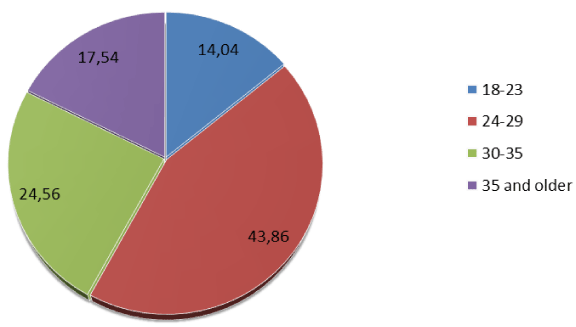
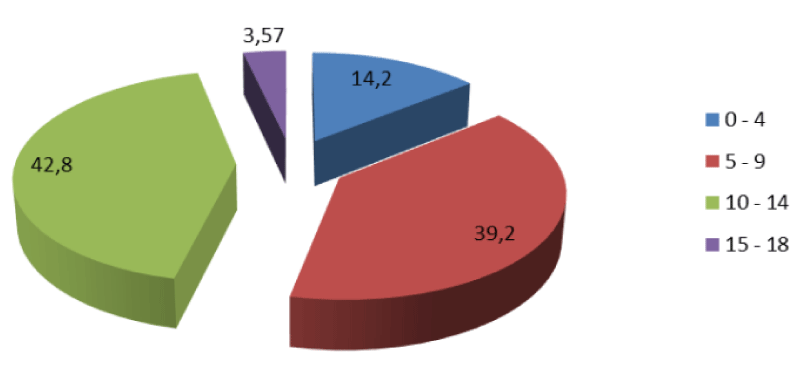
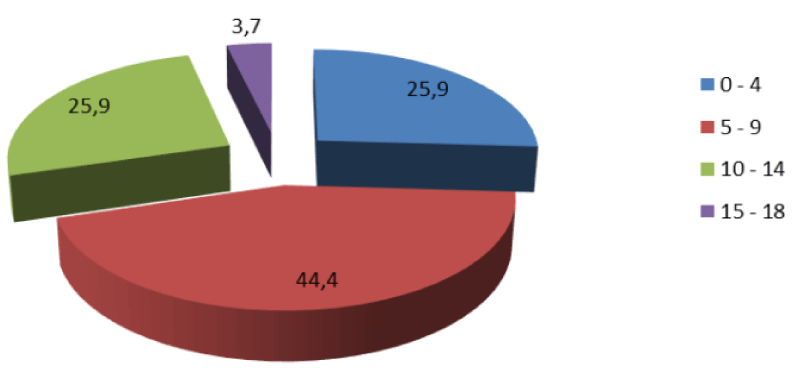
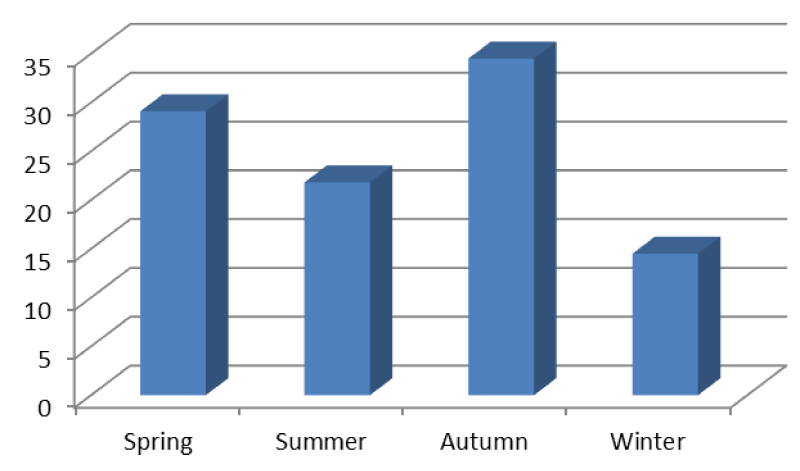

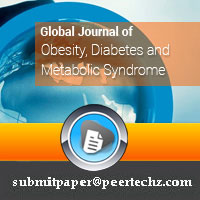
 Save to Mendeley
Save to Mendeley
